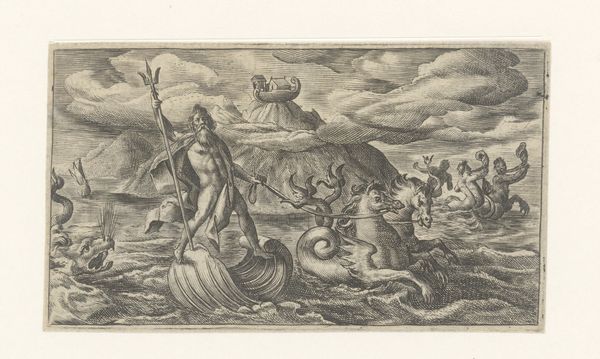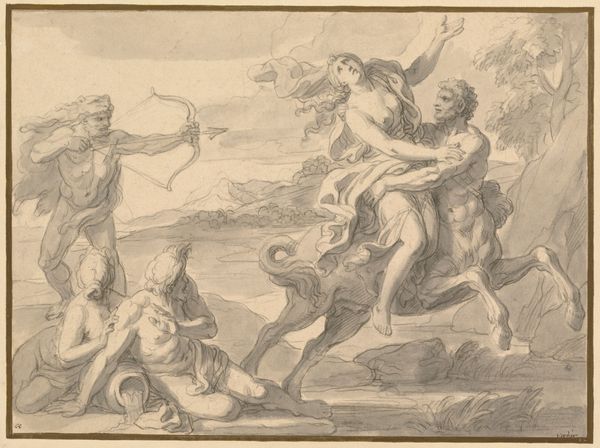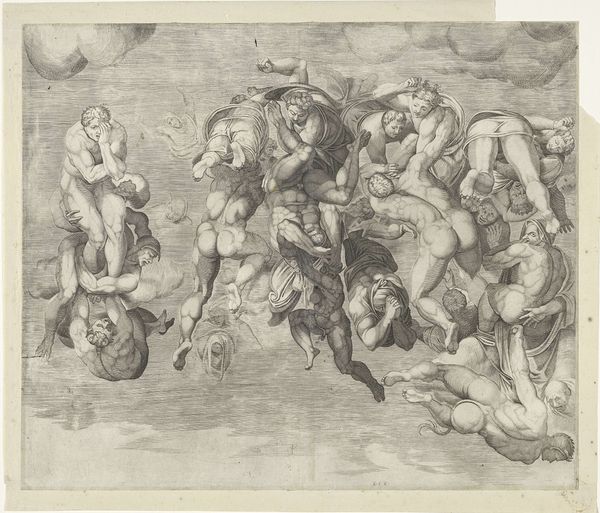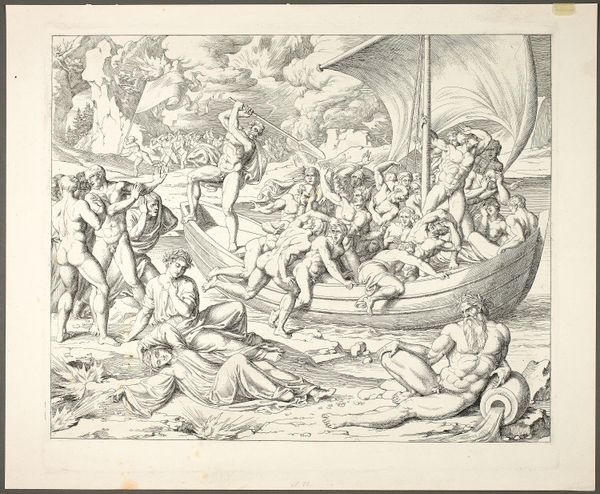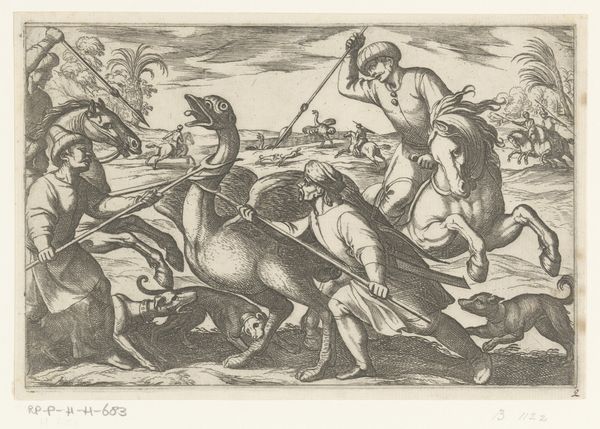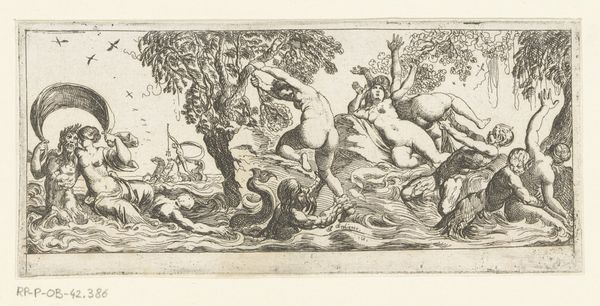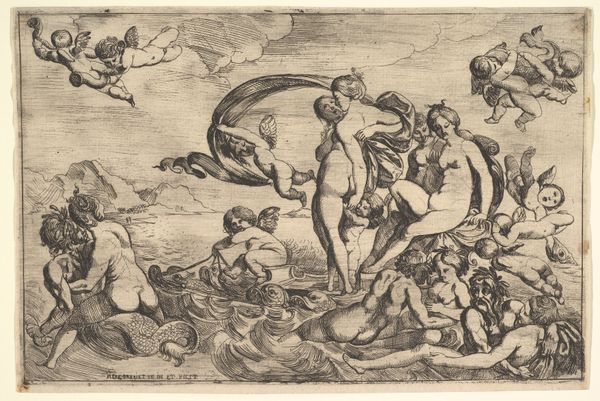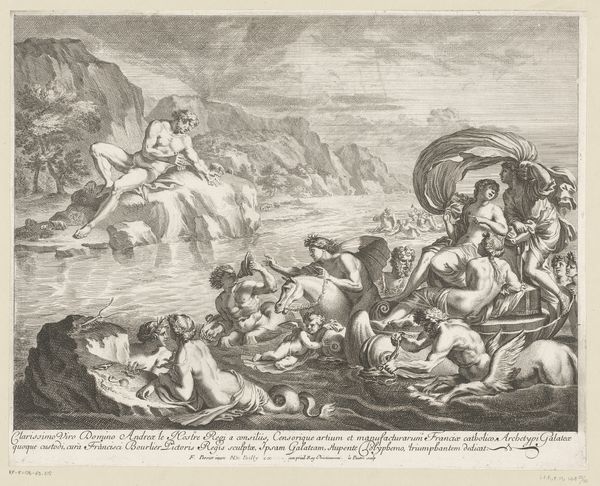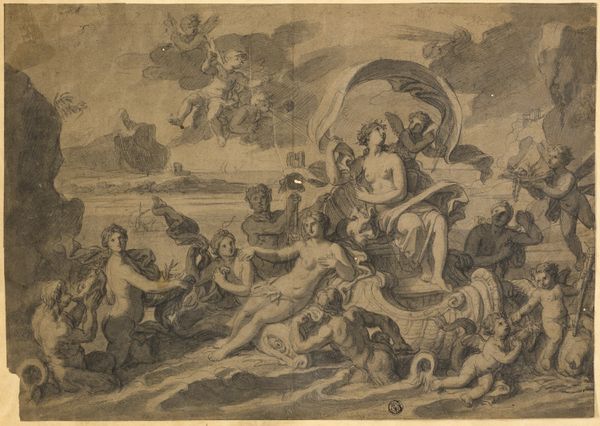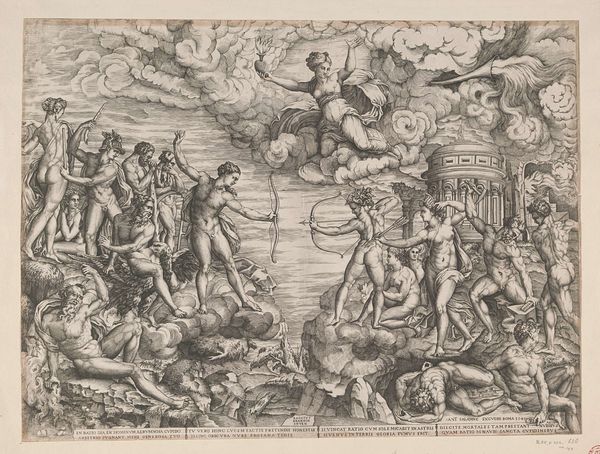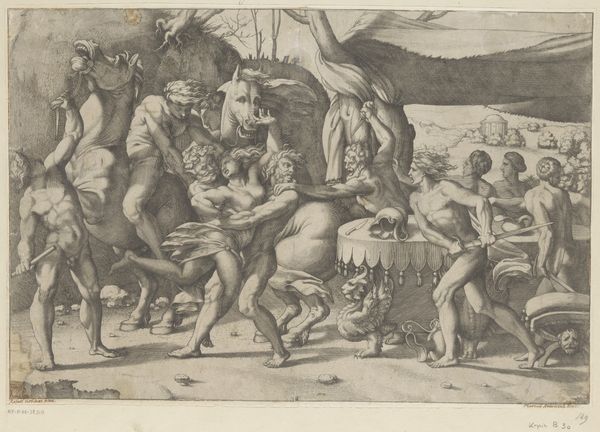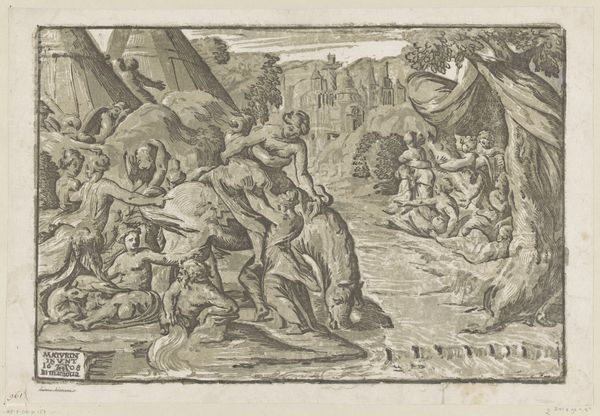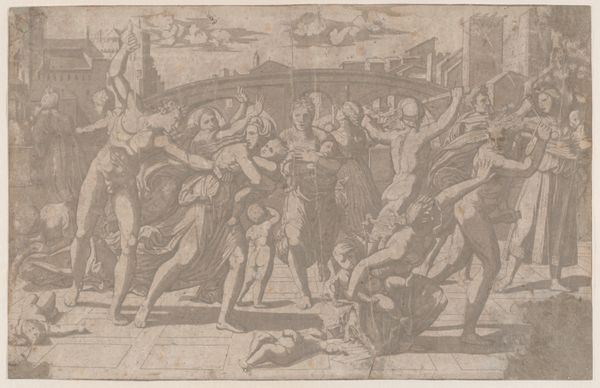
print, engraving
#
allegory
# print
#
pen sketch
#
pencil sketch
#
old engraving style
#
figuration
#
11_renaissance
#
pen-ink sketch
#
line
#
pen work
#
italian-renaissance
#
nude
#
engraving
Dimensions: height 295 mm, width 465 mm
Copyright: Rijks Museum: Open Domain
Curator: Welcome to the Rijksmuseum. Before us is a piece titled "Venus on a Chariot Pulled by Two Swans," an engraving made around 1540 by the artist known only as Monogrammist IQV. It's an intriguing allegorical scene rendered with remarkable detail. Editor: Immediately, the scene strikes me as chaotic and fantastical. There's so much movement and life rendered with very delicate line work—but what's particularly striking is the sheer number of figures and their ambiguous relationships to one another. Curator: Precisely. Consider that it reflects the broader interest of Renaissance artists in classical mythology and allegorical themes, often employed to convey complex moral or philosophical ideas. The subject, of course, is the Roman goddess of love, Venus, in all her idealized glory, at the center. But the choice of a sea triumph and the marine creatures hints at a far more layered meaning. Editor: Right, the chariot drawn by swans feels traditional, yet surrounded by sea monsters and putti clinging to those very monsters. Are these elements of fear and aggression intended to add a sense of tension or threat to the otherwise harmonious theme of love and beauty represented by Venus? Curator: Perhaps, the intent was didactic, cautioning against the disruptive forces that passion could unleash within a political body. During this period, the ruling houses across Europe invested in complex iconographic programs for prints such as this, designed to portray themselves through idealized lenses, which in turn, informed perceptions about power and influence in the European imagination. Editor: I wonder about the implications of presenting classical subjects and nudity in a period where religious reformations were so fiercely debated. It's impossible to view this today without considering how visual culture served as a site of tension in society. How would diverse audiences interpret this? Whose gaze does it reflect? Curator: Excellent points. Looking closely, we can appreciate the exquisite detailing and masterful technique. The use of line is particularly noteworthy, achieving tonal variation that simulates the three-dimensionality. Despite its scale, a multitude of expressions are palpable and rich in depth. Editor: It does lead us to question the power dynamics at play and consider how images like these contribute to broader narratives about gender and class within a patriarchal society. Curator: The themes and questions this artwork raises make this Renaissance piece very engaging to a contemporary audience. Thank you for exploring it with me. Editor: Absolutely. The dialogue around context and the very questions art poses within society remains the most stimulating part.
Comments
No comments
Be the first to comment and join the conversation on the ultimate creative platform.
